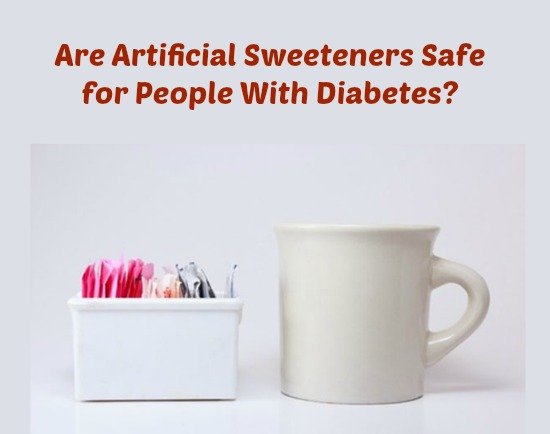Written by: Wallace Merriman

As diabetes educators, we are frequently asked if sugar substitutes are safe and which ones are best. Over time there have been many sugar substitutes, and we always tell people that the one you use is a personal choice. They are safe for people with diabetes, and they can be used to reduce both your calorie and carbohydrate intake. Sugar substitutes also can help curb those cravings you have for something sweet.
You’ll find artificial sweeteners in diet drinks, baked goods, frozen desserts, candy, light yogurt and chewing gum. You can also find them as stand-alone sweeteners to add to coffee, tea, cereal and fruit. Some are also available for cooking and baking.
It’s important to remember that only a small amount is needed since the sweetening power of these substitutes is (at least) 100 times stronger than regular sugar.
There are currently six artificial sweeteners that have been tested and approved by the FDA—or placed on the agency’s Generally Recognized As Safe (GRAS) list. Numerous scientific studies have been performed on each of them to confirm they are safe for consumption.
The FDA has established an “acceptable daily intake” (ADI) for each of the products. This represents the amount of a food ingredient that can be used safely on a daily basis over a lifetime without risk. Here is a current list of sweeteners that have been approved by the FDA.
1. Acesulfame-potassium, also known as Ace-K
This is generally blended with another low-calorie sweetener.
Brand names include Sunett® and Sweet One®
It is stable under heat, even under moderately acidic or basic conditions, allowing it to be used as a food additive in baking, or in products that require a long shelf life. In carbonated drinks, it is almost always used in conjunction with another sweetener.
2. Aspartame, called by many “the blue packet”
Over 200 studies support its safety. Aspartame is a source of phenylalanine which is an ingredient people with phenylketonuria (PKU) should avoid. A warning label is on the product. Aspartame is not heat stable so it is not the best choice for baking and cooking.
Brand names include Nutrasweet® and Equal®
3. Neotame
This has 7,000 to 8,000 the sweetening power of sugar. It does contain phenylalanine, but because the amount of neotame needed is so small, the levels of phenylalanine are insignificant. The labels are not required to have a warning. There are no other brand names. This product is mainly used by large food manufacturers and it is moderately heat stable in cooking.
4. Saccharin, called “the pink packet”
Also in a liquid form, it has been used for more than 100 years. The studies in the 1970s that linked saccharin to bladder cancer were dismissed by the FDA as they were not relevant to humans. Saccharin is heat stable and a good choice for use in cooking, baking and canning/preserving.
Brand names include Sweet ‘N Low®, Sweet Twin® and Sugar Twin®
5. Stevia, known as “the green packet”
Also called Stevioside, Rebaudioside A, B, C,D,F, Dulcoside A, Rubusoside and Steviolbioside
Also comes in liquid and dissolvable tablets. Some Stevia products have not received GRAS status and must be sold as dietary supplements, not as a non-nutritive sweetener. Use to sweeten beverages. May be used in baking but adjustments have to be made for the lack of moisture and bulk. Follow recommendations on product labels.
Brand names include A Sweet Leaf®, Sun Crystals®, Stevia®, Truvia® and PureVia®6.
6. Sucralose, called “the yellow packet”
Saccharin and sucralose are heat stable and are easiest to use in baking and cooking. It’s available to buy in dissolvable tablets, granular tablets and baking blends.
Brand names include N’Joy® and Splenda®
Using sugar substitutes in cooking and baking
Read packages carefully for specific instructions on the best way to substitute the low-calorie sweetener for sugar in recipes. Things to know when using a sugar substitute:
- Baked products may be lighter in color because of the lack of browning effect found in real sugar
- Volume may be lower in cakes, muffins and sweet breads because of the lack of bulking ability in real sugar
- The texture may be altered
- There may be an aftertaste with some of the substitutes
- Cooking time may vary
- Products may not keep as long
Source: diabetes.org
Which sweeteners do you use and which should you change?
